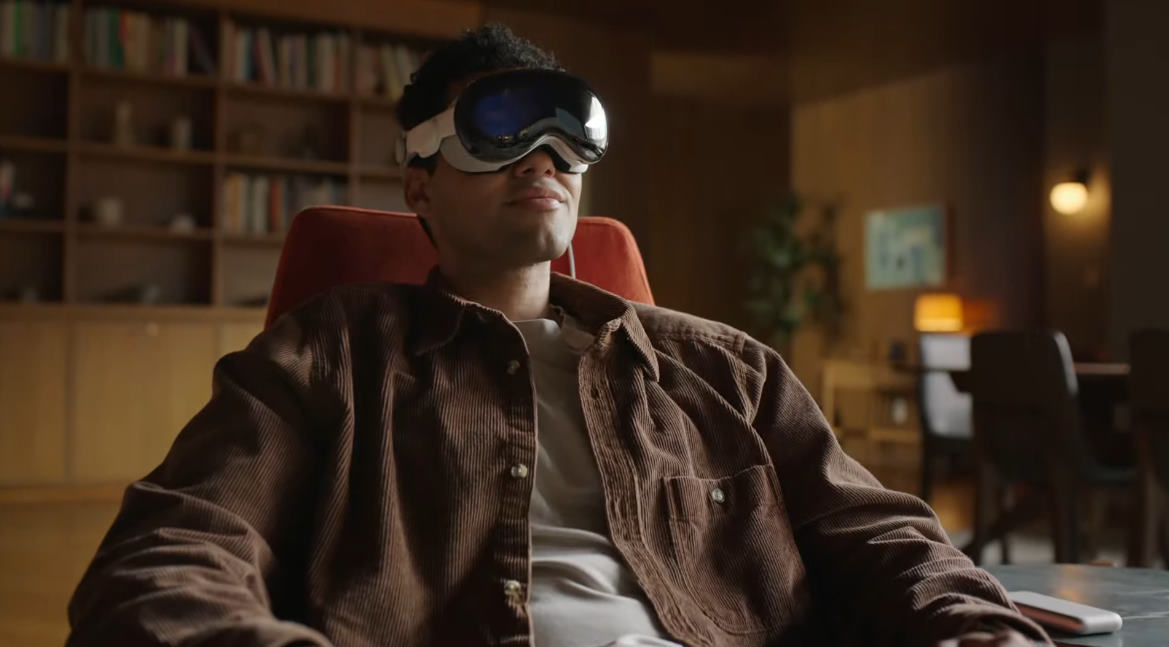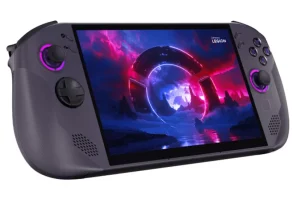This product builds on over a decade of work on AR technologies so far focused on your mobile devices. According to the company, its intention is to do for augmented reality what the original Mac did for computing and the iPhone for mobile telephony. They are big words.
Vision Pro stands out for its design in the shape of a diving goggle. It’s not as light as the rumored mixed reality headset that Apple is also up to, but that’s not to say it’s anything remotely comparable to Meta’s new Quest 3. In the absence of knowing its complete specifications, everything points to a very high-tech product, capable of displaying synthetic images over the wearer’s natural field of vision with extraordinary fidelity.
An extremely interesting detail of Vision Pro is its control through eye tracking (the viewfinder monitors the position of the eyes at all times) and the observation of hand gestures using sensors that reach the bottom of the viewfinder to facilitate its use. no need to raise your hands. Unlike other proposals, it does not require physical controls: all the work of managing the desktop and interacting with content is carried out by capturing eye and environmental information.
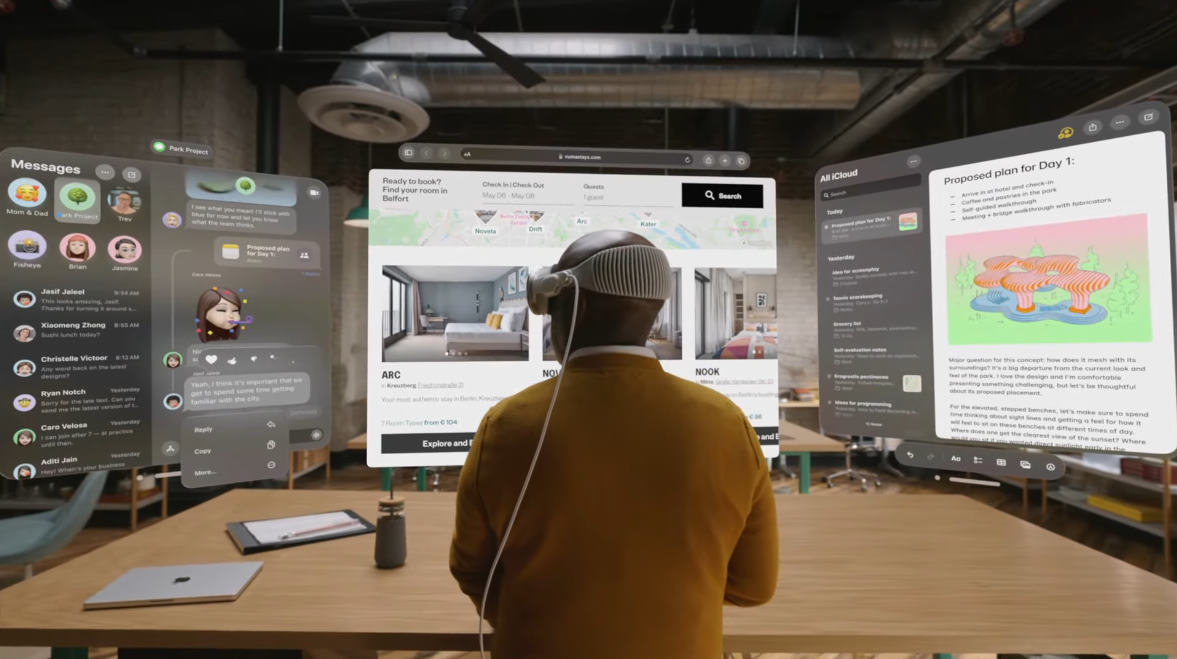
Apple’s official video shows that this is a fully self-contained design, though not self-contained in the viewfinder. Validating the rumors of the last few months, Vision Pro houses the battery, with two hours of autonomy, in a module located on the user’s waist or pocket to reduce the suspended mass and possibly avoid heating problems. Certainly, everything that has been seen in terms of image quality and interaction, if true to reality, is far ahead of any consumer proposal seen to date.
It seems quite obvious that Apple wants to give Vision Pro a strong multimedia aspect. In fact, the possibilities offered by augmented reality in terms of interaction and added or intelligent information seem to have taken a backseat to its ability to enjoy multimedia content. and video games, since it also has access to Apple Arcade and will have specific experiences designed by studios such as Disney, which will have its Disney+ service available from day one.
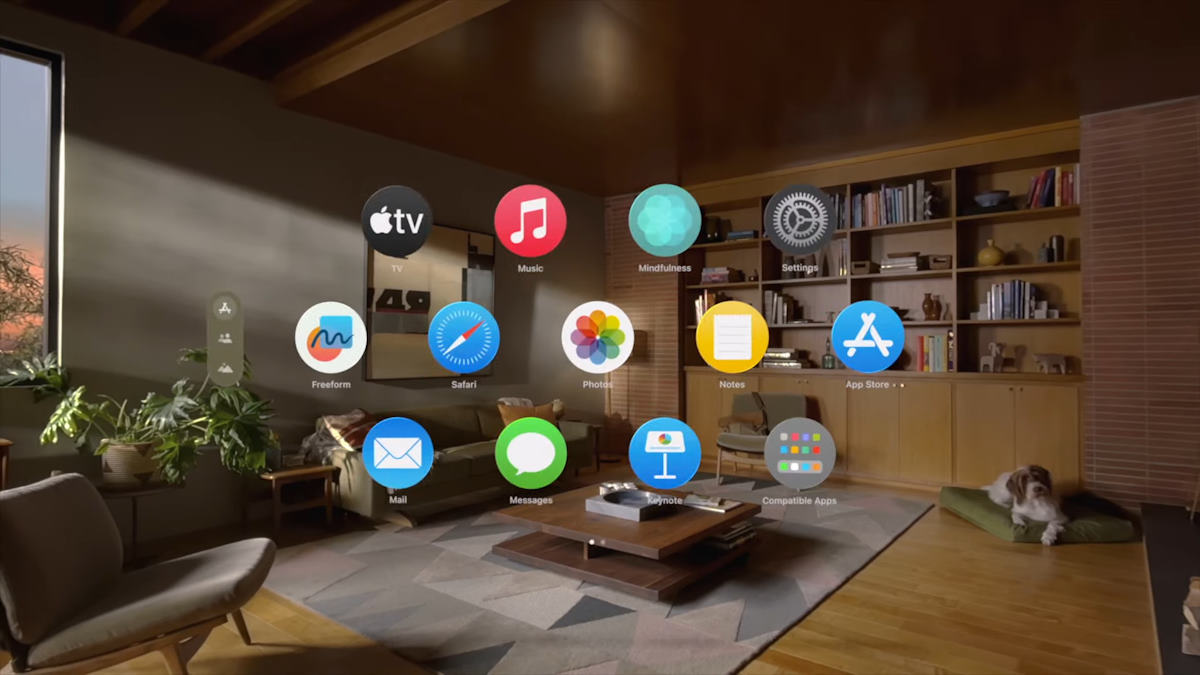
At the design and engineering level, Apple ensures that it is its most ambitious product to date. The viewfinder itself is made of optical-quality laminated glass and is mounted on a machined aluminum chassis with numerous nods to products like the Apple Watch (such as the crown used as a physical control) or the iPhone range (the button to take screenshots spaces), adopting a very coherent design language. The textile part of the visor that is in contact with the face will come in different sizes to better adapt to the physique of each user, although it is not clear if several pads or just one will come with the device.
The image itself is generated using a total of 23 million pixels by combining two Micro-OLED screens. There’s also high-quality spatial sound with environment mapping capabilities (Apple dares to describe it as ray tracing acoustic). All this multimedia display is managed from a specific version of the company’s M2 processor, which is accompanied for the occasion by a new chip called R1. This new processor is responsible for transmitting the images and supports the M2 to reduce latency.
The device’s array of information capture elements is certainly impressive, with a total of 12 cameras, five sensors and six microphones.
An extremely curious detail is that the viewer can show the user’s eyes to improve their communication in the real world. This effect is achieved thanks to a curved OLED panel and the use of eye tracking sensors or cameras. The viewer also automatically generates a 3D avatar of the user for use in virtual environments; it is a feature that is an integral part of visionOS, a new operating system developed by Apple specifically for use with augmented reality devices. Or spatial computing, as you prefer to call it.
Regarding security, Apple has provided a new identification system called Optic ID that analyzes the user’s iris. This information is stored encrypted and does not leave the device or be shared with apps, just as Apple does not access eye tracking information. It is also interesting the detail that the viewfinder shows some kind of warning when it is recording video or taking screenshots of the environment to notify anyone nearby.
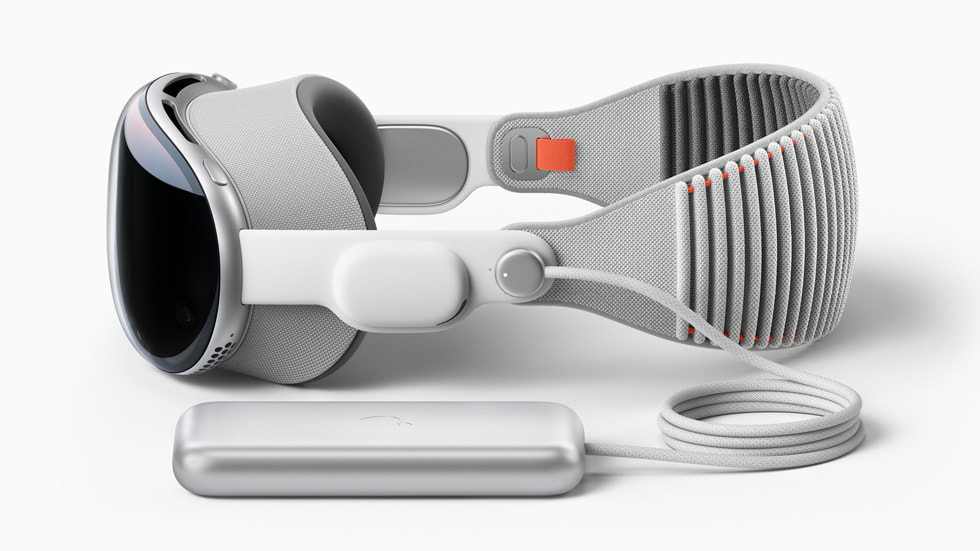 The external battery provides an autonomy of 2 hours.
The external battery provides an autonomy of 2 hours.It is difficult to know the fit of Vision Pro in the Apple range. The device seems to straddle between an “immersive” companion for the iPhone or any of its computers, a professional viewer for engineers or doctors, and a gaming machine and multimedia consumption for power users with very bulging purses. It will be interesting to see how Apple develops its strategy to avoid positioning problems, but in the meantime, we can keep the detail that Vision Pro will go on sale at the beginning of 2024 with a price for the United States of 3,499 dollars.


![[Img #74664]](https://thelatestnews.world/wp-content/uploads/2024/12/James-Watson-The-controversial-genius-behind-the-double-helix-150x150.jpg)







